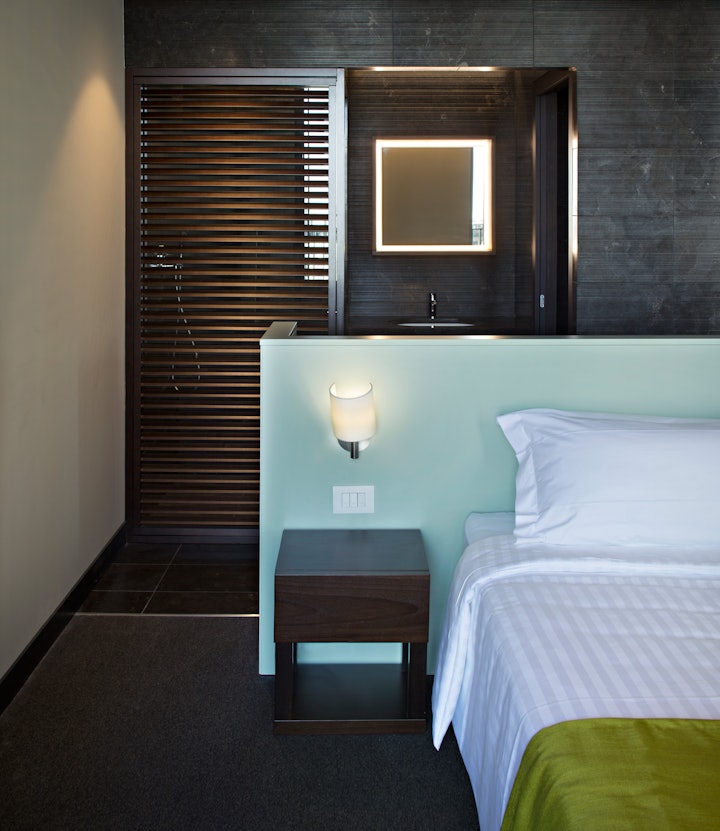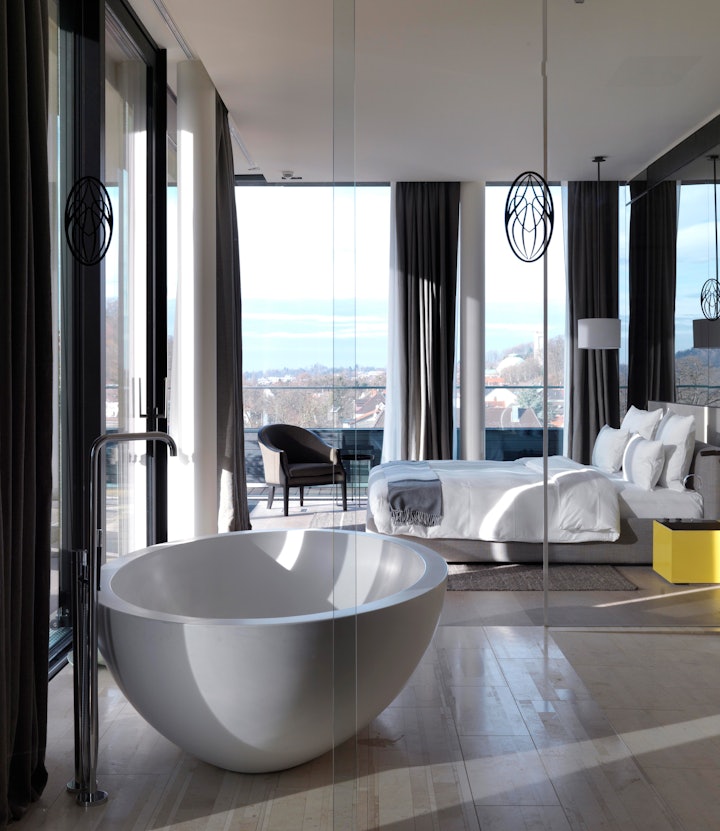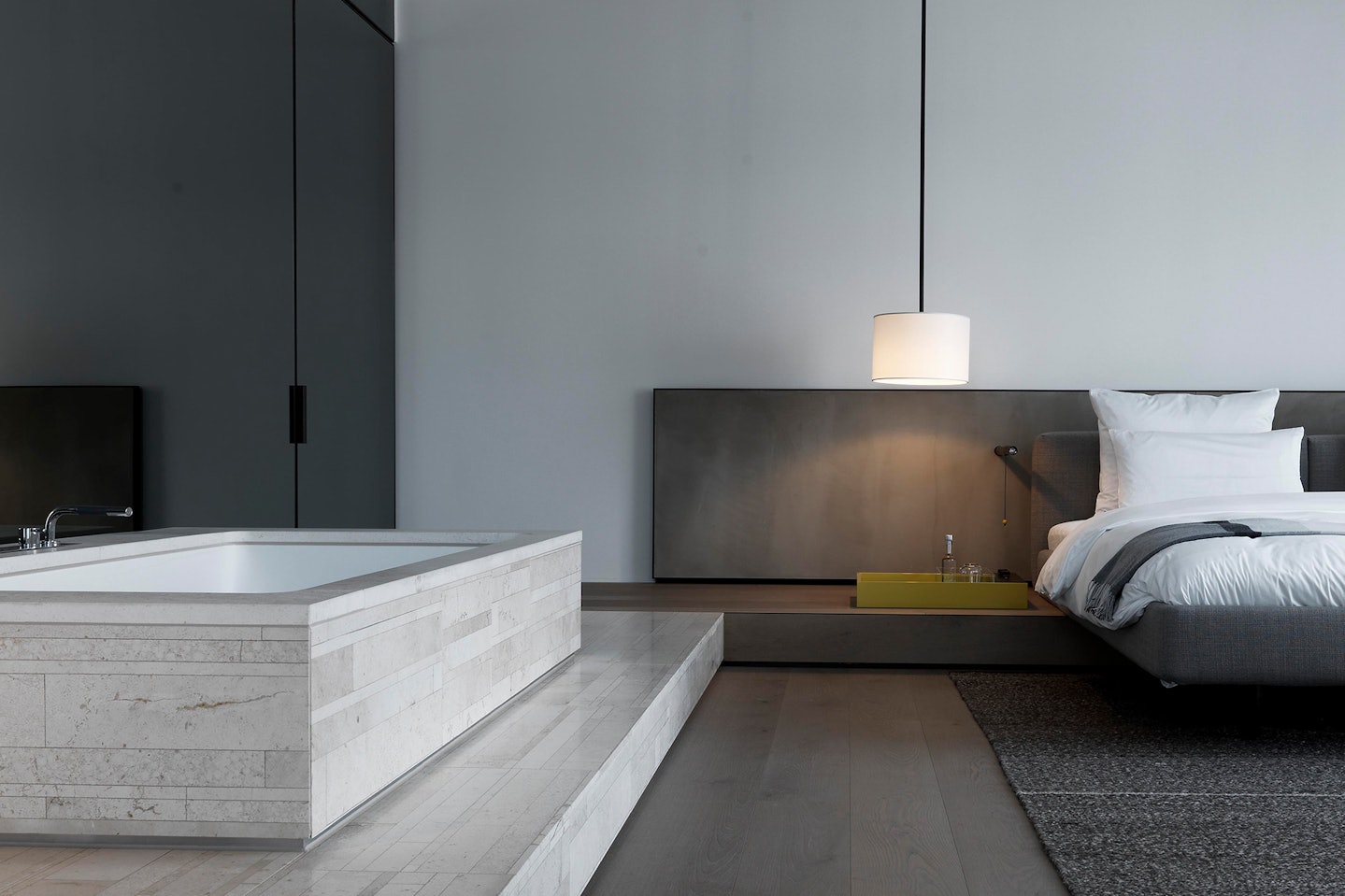The bedroom: the most important space in the house
03.2022
In many ways the bedroom is the most important space in the house. With the demands that the digital world places on our time, the need for good quality sleep is ever more apparent. In addition to improving concentration and productivity, being well rested has been shown to benefit immune function, mental health, and even help weight loss. Creating an environment that encourages sleep is vital and, as the junction of functional and beautiful design, the bedroom has been the focus of experimentation by some of the greatest architects and designers.

The early modernist architect Alfred Loos, for example, designed a room way back in 1903 which saw the space transformed into a richly textural, sensual refuge. Conceived for the Viennese apartment where he lived with his wife, a thick white fur rug covered the floor, climbing up the base of the bed, appearing as though it were slowly sinking into cloud, and with the white linen curtains draped over the walls, he created a sense of fluidity and immersion, a stark contrast to the rigid, linear world hidden from view outside. Like the warm, wood-lined, stone-clad bedrooms designed by the great modernist Frank Lloyd Wright, grounding the experience of the room in natural materials, Loo’s radical design created the intimacy and calm needed for easy, restful sleep.

Other designers played with the format of the bedroom – Le Corbusier raising the bed in his Parisian apartment on stilts, so he could see the trees of the Bois de Boulogne while under the covers; Walter Gropius, in the house he built for himself in New England, dividing the room with glass so that he could sleep with the windows open all year and dress in the warm – but otherwise its scope has stayed largely the same. It is instead in how the space articulates a sense of harmony, in its suitability for sleep and those slow, quiet hours at night and in the morning, that has become the focus of bedroom design.
For Salvatori, the bedroom is a space which calls for sensitive manipulation of light and tone. We typically draw on the soft, creamy warmth of Crema d’Orcia limestone, often pairing it with elegant, rich dark brown Pietra d’Avola. Using a combination of classic honed finish or a more tactile texture such as Bamboo, Plissé or Raw to create interest on the walls, we focus on creating airy, tranquil environments which cocoon the inhabitant. A sanctuary, a soothing respite from the noise and activity of modern life. A place to escape, relax and, most importantly, rest. These are the principles which guide our approach to designing the perfect bedroom. After all, we may be unconscious for most of the time we spend there, but no other room has such an effect on our waking life.

The design of the bedroom, in informing how we rest, how we fall asleep and how we wake – those vulnerable moments before we fall into dreams and unconsciousness – plays a considerable role in our day-to-day experience. We may be unconscious for most of the time we spend there, but no other room has such an effect on our waking life.
